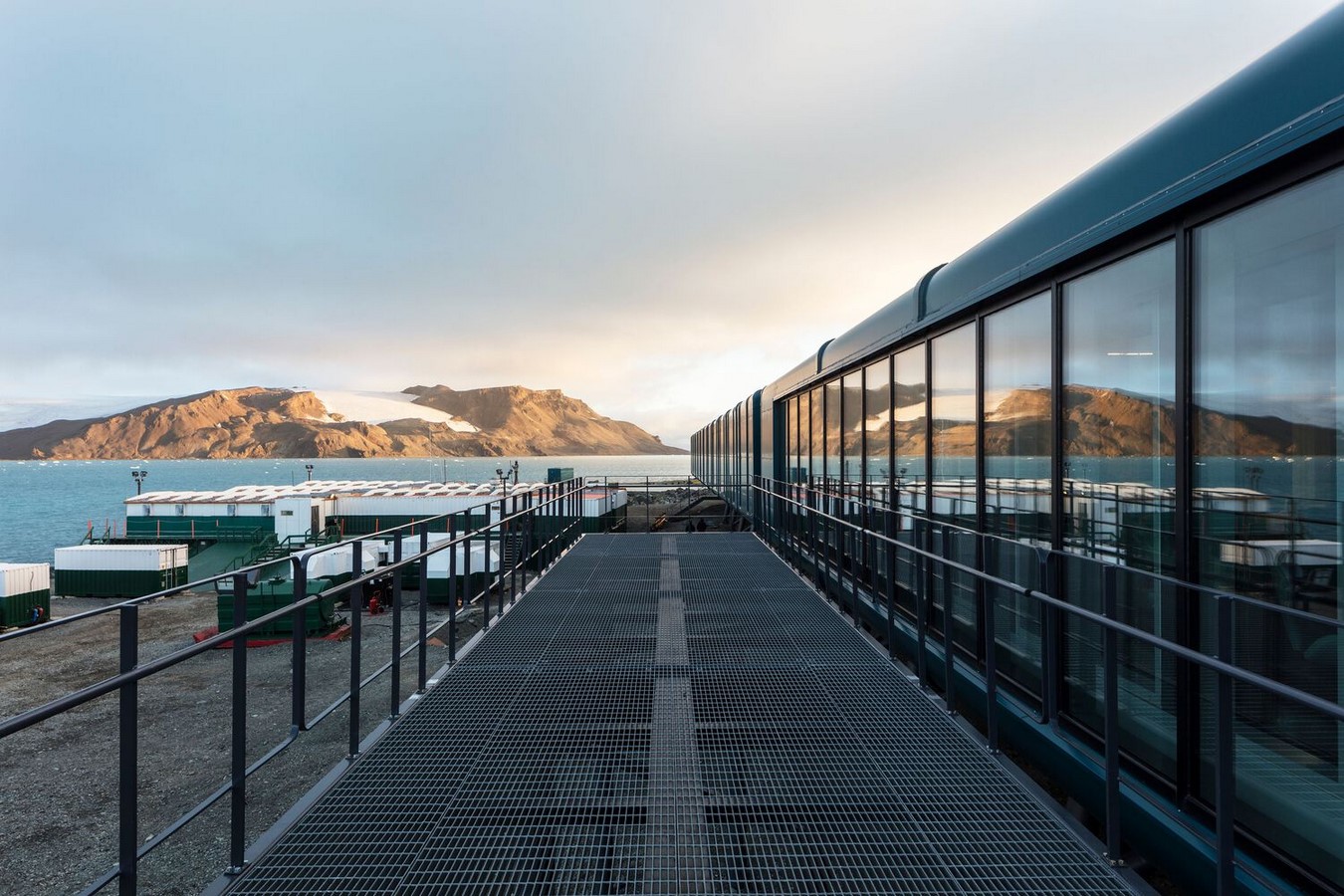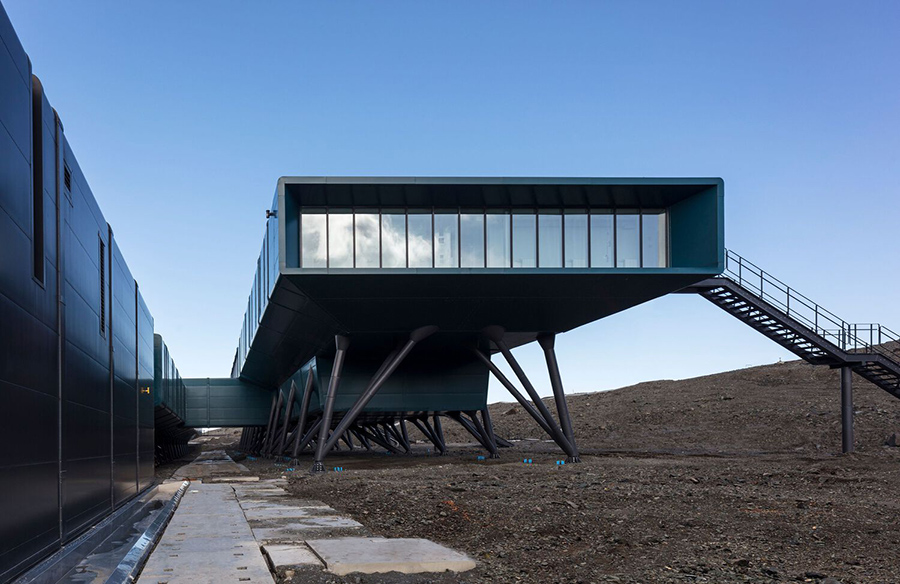Designing structures in extreme environments demands more than just functional efficiency; it requires creating a sanctuary that shields and nurtures its occupants. The Comandante Ferraz Antarctic Station, conceived by Studio 41, epitomizes this ethos, embodying both technological prowess and aesthetic sensitivity.

Symbolism and Functionality
As Brazil’s new Antarctic home, the station serves as a bastion of scientific inquiry and collaboration, symbolizing the nation’s commitment to global research efforts. It also signifies resilience, rising from the ashes of a devastating fire in 2012 to reaffirm Brazil’s presence in Antarctica. Moreover, it offers a platform for technological innovation, showcasing the capabilities of Brazilian architecture and industry.

Harmonizing with Nature
Central to the design process is a deep appreciation for the fragility of human life in extreme environments. Every decision is made with meticulous care, balancing the imperative of human comfort with environmental stewardship. The station’s layout and orientation are informed by the surrounding landscape and ecological considerations, minimizing its ecological footprint while maximizing its functionality.
Operational Efficiency
The station’s operational areas are strategically organized into distinct blocks, each serving a specific purpose. Cabins, dining facilities, and common areas are situated in the upper block, while laboratories and maintenance facilities occupy the lower block. A transversal block houses meeting spaces and amenities, fostering social interaction and intellectual exchange.

Sustainable Integration
To minimize its environmental impact, the station incorporates renewable energy technologies, including photovoltaic panels and vertical-axis wind turbines. These sustainable features not only reduce reliance on fossil fuels but also ensure the station’s long-term viability in the harsh Antarctic climate.

In essence, the Comandante Ferraz Antarctic Station stands as a testament to human ingenuity and resilience, offering a beacon of hope and progress in one of the world’s most challenging environments. As a nexus of scientific exploration and environmental stewardship, it embodies the spirit of collaboration and innovation that defines humanity’s quest for knowledge and understanding.













